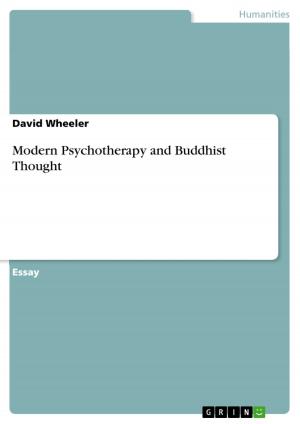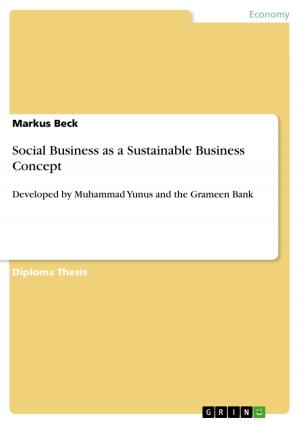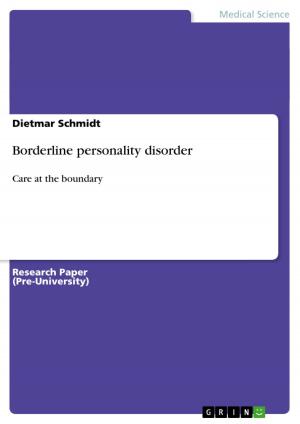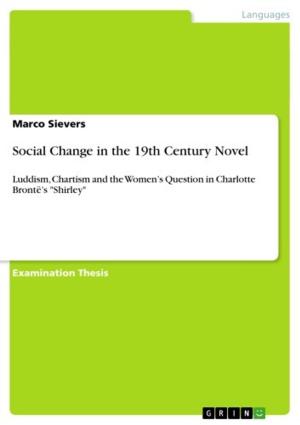| Author: | Sarah Müller | ISBN: | 9783638050265 |
| Publisher: | GRIN Publishing | Publication: | May 20, 2008 |
| Imprint: | GRIN Publishing | Language: | English |
| Author: | Sarah Müller |
| ISBN: | 9783638050265 |
| Publisher: | GRIN Publishing |
| Publication: | May 20, 2008 |
| Imprint: | GRIN Publishing |
| Language: | English |
Seminar paper from the year 2008 in the subject English Language and Literature Studies - Literature, grade: 2, University of Frankfurt (Main), 24 entries in the bibliography, language: English, abstract: Harry Potter is a heptalogy of fantasy novels by the English author Joanne K. Rowling about an adolescent boy named Harry Potter, first published in England in 1997. Harry Potter attends the Hogwarts School of Witchcraft and Wizardry, a boarding school for young wizards and witches. Up to his eleventh birthday his cruel relatives, the Dursleys, have raised the orphaned Harry. On this day he learns that he is a wizard and has been invited to attend Hogwarts. The story is mostly set on the school premises, with each of the seven volumes describing a school year at Hogwarts and a year of Harry's growing-up. The main topic is Harry Potter's fight against the evil wizard Lord Voldemort who killed Harry's parents when he was still an infant. Throughout the story the Dark Lord Voldemort gains more and more power and tries to kill Harry several times. In Hallows the climax is reached and the final battle between Harry and Lord Voldemort which will decide the future of the wizarding world. The fight of good versus evil is one of the oldest topics of mankind. Starting with the original sin in the Garden of Eden this fight has dominated moral concepts of the Christian world ever since. This paper presents an analysis of how good and evil are portrayed and presented in the Harry Potter series. First, there is a description of Christian motifs in the series and how these motifs can be compared to certain characters in the books. Second, 'good' characters such as Harry's close friends Ron and Hermione, and Harry's mentor, Professor Dumbledore, are described and characterised as to why they are part of the 'good'. Third, the 'evil' opponents Draco Malfoy and the evil Dark Lord Voldemort are analysed as to how they exhibit 'evil' behaviour. The last chapter deals with the question of whether Harry Potter is 'good' or 'evil' as he does not always act as an exemplary student.
Seminar paper from the year 2008 in the subject English Language and Literature Studies - Literature, grade: 2, University of Frankfurt (Main), 24 entries in the bibliography, language: English, abstract: Harry Potter is a heptalogy of fantasy novels by the English author Joanne K. Rowling about an adolescent boy named Harry Potter, first published in England in 1997. Harry Potter attends the Hogwarts School of Witchcraft and Wizardry, a boarding school for young wizards and witches. Up to his eleventh birthday his cruel relatives, the Dursleys, have raised the orphaned Harry. On this day he learns that he is a wizard and has been invited to attend Hogwarts. The story is mostly set on the school premises, with each of the seven volumes describing a school year at Hogwarts and a year of Harry's growing-up. The main topic is Harry Potter's fight against the evil wizard Lord Voldemort who killed Harry's parents when he was still an infant. Throughout the story the Dark Lord Voldemort gains more and more power and tries to kill Harry several times. In Hallows the climax is reached and the final battle between Harry and Lord Voldemort which will decide the future of the wizarding world. The fight of good versus evil is one of the oldest topics of mankind. Starting with the original sin in the Garden of Eden this fight has dominated moral concepts of the Christian world ever since. This paper presents an analysis of how good and evil are portrayed and presented in the Harry Potter series. First, there is a description of Christian motifs in the series and how these motifs can be compared to certain characters in the books. Second, 'good' characters such as Harry's close friends Ron and Hermione, and Harry's mentor, Professor Dumbledore, are described and characterised as to why they are part of the 'good'. Third, the 'evil' opponents Draco Malfoy and the evil Dark Lord Voldemort are analysed as to how they exhibit 'evil' behaviour. The last chapter deals with the question of whether Harry Potter is 'good' or 'evil' as he does not always act as an exemplary student.















